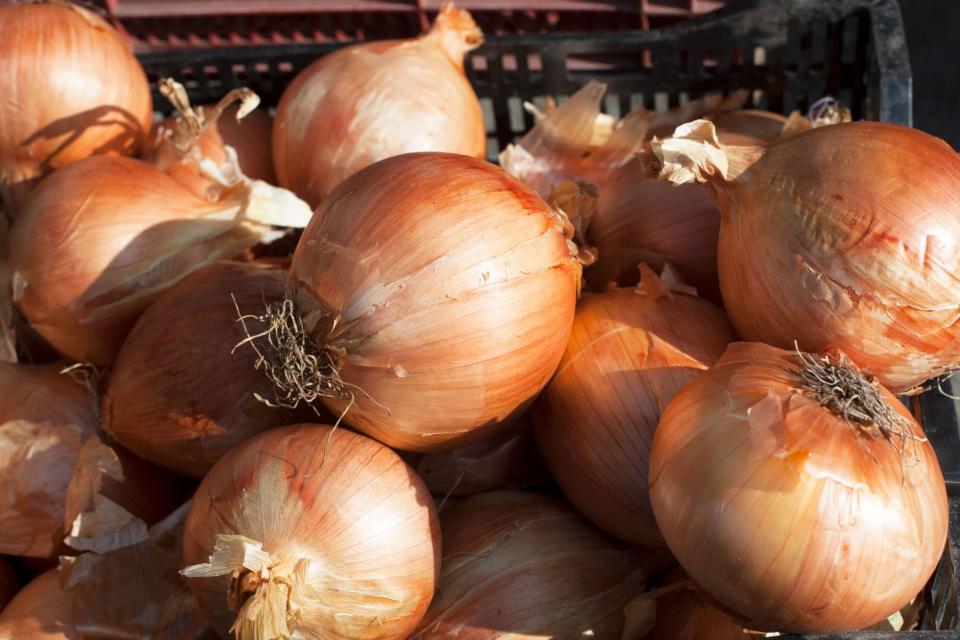What Exactly Is a Vidalia Onion?

When a restaurant serves Vidalia onions, chances are the menu proudly refers to them by name. Diners in-the-know leap at the chance to order a dish made with these delightfully sweet onions.
The uninitiated, however, may scratch their head and wonder what distinguishes Vidalia onions from varieties they've tasted in the past. To find out, we asked Chelsea Page, spokesperson of the Vidalia Onion Committee, to explain what a Vidalia onion is and how they come by the delicious flavor Southern chefs love incorporating into their recipes.
What Is a Vidalia Onion?
A Vidalia onion is a hybrid Granex yellow onion lauded for its sweet, mild flavor. Page adds, "Vidalia onions can only be grown in the state of Georgia outlined in a 20-county area."
She also notes that Vidalia onions are the official state vegetable of Georgia.
How Do Vidalia Onions Differ From Common Yellow Onions?
Page says that Vidalia onions are distinguished from common yellow onions by their naturally sweet taste. She continues, "Vidalia onions are naturally sweet but have just enough of a hint of onion for you to know that you are still eating an onion."
She says they owe their unique flavor to the soil in the Vidalia onion growing region in Georgia, adding, "In the growing region there is not as much sulfur in the soil, therefore the onion does not have that pungent taste like most onions."
How Can You Identify a Vidalia Onion?
If you're wondering if an onion at the grocery store is a Vidalia onion, Page says to take a look at the PLU number. The code for Vidalia onions is 4159.

Elisa Cicinelli/Getty Images
When Is the Vidalia Onion Growing Season?
According to Page, the Vidalia onion growing season normally runs from mid-April to Labor Day, so be sure to keep your eyes peeled for them in grocery stores and restaurant menus during this time.
How Should Vidalia Onions Be Stored?
Vidalia onions are somewhat tricky to store. Page says, "The water content in Vidalia onions contributes to the sweet taste, but it also shortens their shelf life and makes them more susceptible to bruising. The key to preserving Vidalias is to keep them cool and dry."
She offers the following tips to make the most out of your Vidalia onions.
If you're storing your Vidalia onions in the refrigerator, Page says to wrap them in paper towels to absorb excess moisture, and place them in the vegetable crisper with the vents closed.
Page also says you can store Vidalia onions in the legs of a clean, sheer pair of pantyhose. For this method, she recommends tying a knot between each onion simply cutting the knot above when you're ready to use one. Be sure to hang them in a cool, dry, well-ventilated area.
Vidalia onions can also be stored on elevated racks in a cool, dry place. Page says the key here is to spread the onions out so they aren't touching each other. This will increase ventilation, and your onions will still be at their best when you're ready to make a Vidalia onion souffle.
Page cautions that you shouldn't store Vidalia onions, or any type of onions, near potatoes. Both potatoes and onions emit gasses that will cause both to prematurely spoil.
How Long Do Vidalia Onions Last?
Keeping Page's storage advice in mind, Vidalia onions will last for 1 to 2 months stored in a cool, dry place, or up to 6 months when refrigerated.